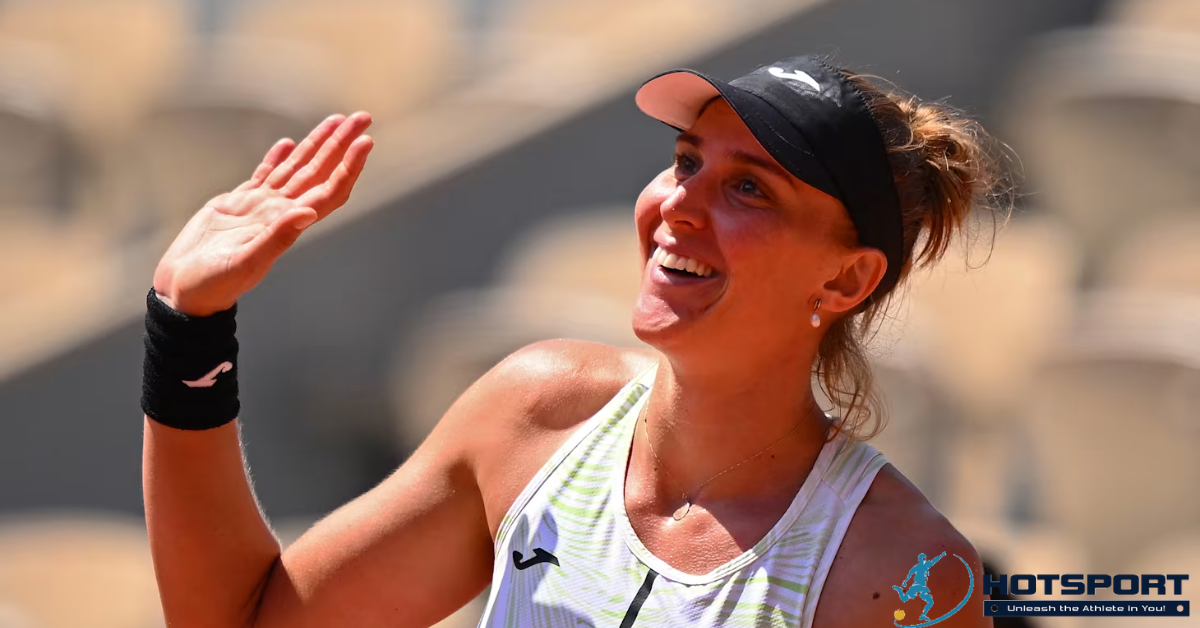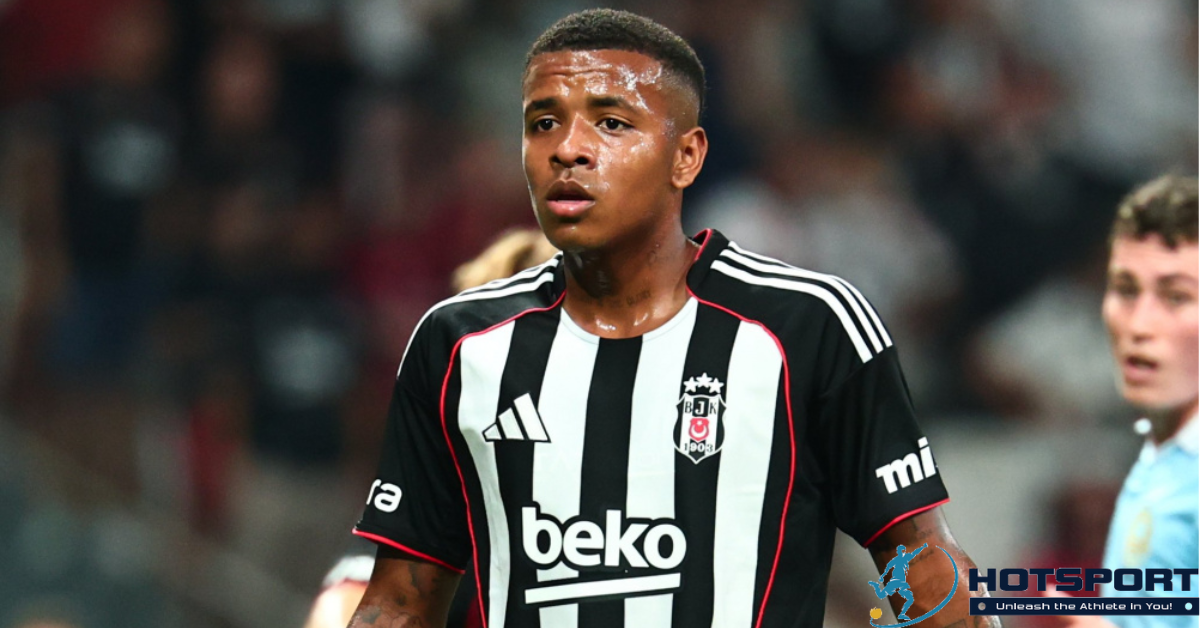Introduction
Beatriz Haddad Maia, affectionately known as Bia, is one of the greatest revelations in Brazilian tennis in recent years. Born on May 30, 1996, in the vibrant city of São Paulo, she embodies not only the grit and talent of an elite athlete but also the resilience of a nation passionate about sports. With her left-handed racket and unwavering determination, Bia has carved a path of victories that inspires young tennis players across Brazil. At 29, in 2025, she continues to shine on international courts, proudly representing Brazilian colors and winning hearts worldwide.
Tennis, a sport of precision and patience, has found in Bia the perfect protagonist. Her journey began on the dusty courts of São Paulo clubs and evolved to the grand stages of Grand Slams. This report explores the chapters of her life: from her first steps in the sport to her recent triumphs, through personal challenges and the unique style that defines her. In a year like 2025, marked by intense tournaments and new Olympic goals, Bia remains a beacon for Brazilian sports.
Early Career
First Steps on the Court
Beatriz Haddad Maia’s tennis story began in her childhood in São Paulo. Born to parents who always encouraged sports, Bia picked up a racket at age five in a local club. “I remember chasing the ball all day, never getting tired,” she recalled in an interview years later. Her precocious talent caught the attention of coaches, who saw in her a natural flair for left-handed play—a rarity in the women’s circuit.
By age 12, Bia was competing in regional junior tournaments, balancing school with rigorous training. Her family, especially her father, an engineer and tennis enthusiast, was the backbone of this phase. They moved across São Paulo neighborhoods in search of better facilities, and Bia began traveling for national competitions. In 2009, at 13, she won her first major title in the Brazilian Junior Tennis Circuit, defeating older opponents with remarkable maturity.
Transition to Professionalism
The leap to professional tennis came in 2010 when Bia, still a teenager, competed in her first ITF (International Tennis Federation) tournament. Her debut was modest—a first-round loss—but rich in lessons. “I learned that professional tennis is more about the mind than strength,” she reflects. At 15, in 2011, Bia reached her first adult final at an ITF event in Mogi das Cruzes, catapulting her into the junior world rankings.
During this transition, Bia trained under coaches like Brazil’s João Zwetsch, who refined her technique. Constant trips to Europe and the United States tested her endurance but broadened her horizons. In 2012, she won her first ITF title in Bauru, a milestone that fueled bigger dreams. At 16, Bia was already top 100 in the ITF junior rankings, with an impressive win record. This early phase, full of highs and lows, forged the character of a player who never gives up easily.
Rise in the Professional Circuit
Entry into the WTA Tour
Bia’s breakthrough to the WTA Tour, the premier women’s tennis circuit, came in 2015 when she received a wildcard for the Rio Open qualifying rounds. Her performance was notable: she advanced to the main draw and faced players like Carla Suárez Navarro. Though she didn’t win the tournament, the exposure was crucial. “Playing in Brazil with the crowd cheering gave me incredible energy,” Bia said.
In 2017, she solidified her presence. Bia reached her first WTA 125 semifinal in São Paulo and later made the final at the Korea Open—her first WTA-level runner-up finish. That campaign in Seoul, on hard courts under the Asian sun, showcased her versatility. At 21, she broke into the top 100 world rankings, a rare feat for a Brazilian at the time.
Consolidation and First Titles
The following years saw steady growth. In 2019, Bia won two consecutive ITF titles in Europe, propelling her into the top 80. The 2020 pandemic halted the circuit, but Bia used the time to train at home in São Paulo, returning stronger. In 2021, she claimed her first WTA title in Cluj-Napoca, Romania, defeating Ana Bogdan 6-4, 6-2 in the final. Tearfully, she declared, “This title is for my family and Brazil.”
Her second title came in 2022 at the Poland Open in Warsaw, where she overcame players like Madison Keys. These triumphs pushed her into the top 50, and in 2023, Bia soared: she reached the top 10 in June after semifinals in tournaments like Birmingham and Washington. Her meteoric rise inspired a new generation of Brazilian players, such as Laura Pigossi and Gabriela Cé.
Major Achievements
WTA Titles and Finals
Throughout her career, Beatriz Haddad Maia has secured four WTA titles, all on different surfaces, showcasing her adaptability. Beyond the 2021 and 2022 titles, she won in Seoul in 2024, successfully defending her title with mastery by defeating a local qualifier in the final. Each title tells a story: persistence in Cluj, precision in Warsaw, and experience in Seoul.
In doubles, Bia also excels. She won the WTA 1000 Indian Wells title in 2023 alongside Anna Danilina, a historic achievement for Brazilian women’s doubles. Finals in tournaments like Bogotá and Seoul add to her resume. With a singles record of 473 wins to 266 losses, Bia is one of the most consistent players today.
Grand Slam Performances
Grand Slams are the pinnacle of tennis, and Bia has made her mark. Her best result came at the 2023 Australian Open, where she reached the round of 16, defeating players like Irina-Camelia Begu. At Roland Garros, on Parisian clay, she made the quarterfinals in 2023, with an epic campaign that included wins over Qinwen Zheng and Varvara Gracheva. Wimbledon and the US Open also saw her reach the round of 16, proving her ability across surfaces.
In 2024, Bia advanced to the US Open quarterfinals, where a minor injury tested her resilience. These results make her the most successful Brazilian in Slams since Maria Esther Bueno in the 1950s and 1960s. With career earnings exceeding $9 million, Bia not only competes but inspires.
Playing Style
Technique and Strategy
Beatriz Haddad Maia plays with her left hand, a natural advantage that confounds opponents accustomed to right-handers. Her forehand is powerful, with heavy topspin that makes the ball bounce high, forcing errors. Her two-handed backhand is solid, ideal for long defensive rallies and counterattacks. A classic baseline player, Bia thrives in extended rallies, where her patience and court coverage shine.
Her left-handed serve creates unpredictable angles, with a kick serve targeting opponents’ backcourt. In returns, she’s aggressive, pressuring second serves. At 1.85 meters, she excels at the net, with precise volleys that surprise. Coaches praise her tactical intelligence: Bia reads the game like few others, adjusting patterns based on her opponent.
Strengths and Weaknesses
Bia’s strengths lie in her consistency and endurance. She wins long points, wearing down opponents physically. On fast courts like Seoul, her power stands out; on clay, her topspin dominates. Weaknesses? Occasionally, her temperament: under pressure, unforced errors can creep in. But Bia works on this with sports psychologists, turning weaknesses into lessons.
Compared to idols like Justine Henin—another talented left-hander—Bia’s game is more physical, suited to the modern era of power. Her style balances art and science, making every match a spectacle.
Personal Life
Family and Brazilian Roots
Off the court, Bia is a quintessential Paulistana: she loves barbecue, samba, and Santos beaches. Her family is her core. Her father, Luiz Haddad, was her first coach; her mother, Roberta Maia, handles logistics. Her younger siblings support her, and Bia dedicates victories to them. “Tennis took me away from home early, but family is my anchor,” she says.
Fluent in Portuguese, English, and Spanish, Bia builds friendships on the circuit. She dates Brazilian tennis player Felipe Meligeni Alves, and the couple shares training and travel, strengthening their bond in the sport. Outside tennis, Bia studies business administration at USP, balancing career and education.
Social Commitments
Bia uses her platform for good. As a UNESCO ambassador for women’s sports, she promotes gender equality in Brazilian tennis. During the pandemic, she donated rackets and balls to social projects in São Paulo’s favelas. “I want girls from the peripheries to dream big, like I did,” she says. Her foundation, Bia Tennis Project, offers scholarships to young talents, impacting dozens of lives.
Challenges and Triumphs
Injuries and Tough Moments
Bia’s career hasn’t been all glory. In 2019, a shoulder injury sidelined her for months, raising doubts about her future. “I thought about quitting, but the fans’ support brought me back,” she recalls. In 2023, an accidental doping suspension—due to a contaminated supplement—shook her image, but she returned stronger, proving her innocence and reaching the top 10 soon after.
These challenges shaped Bia. She adopted mindfulness and preventive physiotherapy, reducing injuries. The pressure of being “Brazil’s hope” is heavy, but Bia turns it into fuel.
Lessons Learned
Each obstacle taught resilience. From the suspension, she learned the importance of transparency; from injuries, the value of mental health. Bia now mentors young players, sharing that “tennis is 90% mental.” Her journey is a testament that overcoming challenges is the true trophy.
Recent Updates in 2025
Season So Far
In 2025, Beatriz Haddad Maia is experiencing a season of redemption and focus. After a shaky start, with only three quarterfinals in the first months—including Auckland and Dubai—Bia adjusted her game for hard courts. Her current ranking, 27th in the world (as of September 8), reflects consistency, with a record of 15 wins and 25 losses in singles this year.
In doubles, partnerships with Laura Siegemund yielded semifinals in Madrid and Rome, adding over $1.6 million in prize money for the year. Bia also shone in Challengers, winning two on European clay, preparing her for major events.
Highlights at the 2025 Korea Open
The recent highlight is the Korea Open in Seoul, where Bia is defending her 2024 title. On September 17, she started with a solid victory over South Korean wildcard Dayeon Back, 6-4, 6-3, in a 2-hour-22-minute match under high humidity. Despite needing medical attention for fatigue near the end, Bia broke her opponent’s serve to seal the win, showing grit.
On September 18, Bia faces Germany’s Ella Seidel in the round of 16. Seidel, 20 and ranked 105th, comes from exhausting qualifiers with three three-set wins. Analysts see a balanced duel: Bia’s experience versus Seidel’s youthful energy. In doubles, Bia and Siegemund advance against Aldila Sutjiadi and Giuliana Olmos, aiming for the title.
Future Prospects
With the Los Angeles 2028 Olympics on the horizon, Bia targets a medal, building on her doubles bronze from Paris 2024. Training in São Paulo and Europe, she focuses on speed and mentality. “2025 is about rebuilding, but I feel the best is yet to come,” Bia says. Brazilian fans follow eagerly, knowing each swing of her racket is a victory for the country.
Conclusion
Beatriz Haddad Maia is more than a tennis player: she’s a symbol of Brazilian perseverance and talent. From a São Paulo girl to a top-10 global star, her journey inspires. With four WTA titles, standout Slam performances, and a generous heart, Bia continues to write her story. In 2025, in the heat of Seoul, she reminds us: in tennis, as in life, victory belongs to those who persist. Here’s to more chapters in this golden saga.



